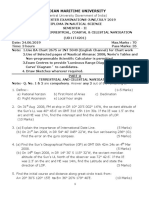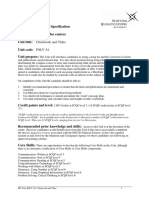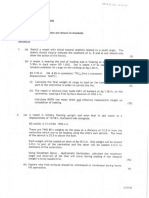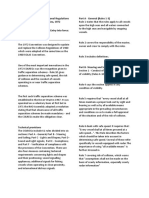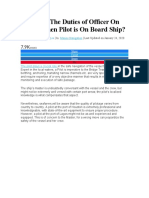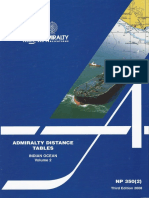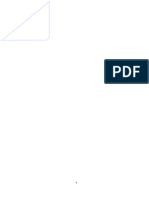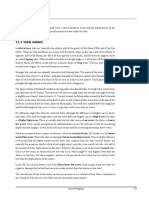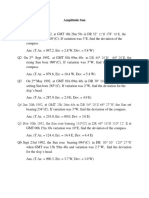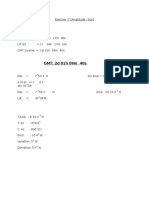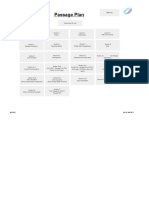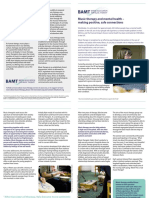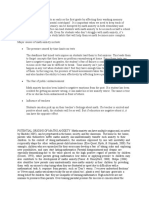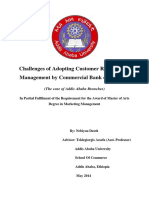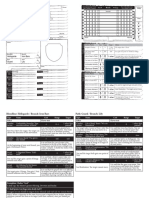Gold Star15 DQ To Đvu Passage Plan - Voy45.2023 - Sao Chép
Uploaded by
phamvandangkthpGold Star15 DQ To Đvu Passage Plan - Voy45.2023 - Sao Chép
Uploaded by
phamvandangkthpTAN PHUC SHIPPING TRACO .
, LTD PASSAGE PLAN
ISM-18-02
Vessel name: GOLD STAR 15
Voyage No: . V:047/2023
Departure Port : DUNG QUAT - Q. NGAI
ETD : 9/28/2023
Arrival Port : DINH VU - HAI PHONG
ETA : 10/1/2023
Attachments
1 Essential Guidelines / Instructions for use Guide
2 Section 1: General information Sheet 1
3 Section 2A: Voyage Appraisal on Paper Charts Sheet 2
4 Section 2B: Voyage Appraisal on ECDIS Sheet 2A
5 Section 3: Publications Sheet 3
6 Section 4: Tides and current Sheet 4
7 Section 5: Weather conditions Sheet 5
8 Section 6: Reporting Details Sheet 6
9 Section 7: Bridge Management Team Sheet 7
10 Section 8: ISPS requirements Sheet 8
11 Section 9: Environmental requirements Sheet 9
12 Section 10: Contingencies Sheet 10
13 Section 11: Departure port - Passage from Berth to Pilot Station Sheet 11
14 Section 12: Sea Passage - Passage from Pilot Station to Pilot Station Sheet 12
15 Section 13A: Arrival port - Passage from Pilot Station to Berth Sheet 13A
16 Section 13B: Arrival port - Passage from Pilot Station to Anchorage Sheet 13B
17 Section 14A: Under Keel Clearance - Departure Sheet 14
18 Section 14B: Under Keel Clearance - Arrival Sheet 14
19 Section 14C: SQUAT Calculation Sheet 14C
20 Section 15: Master's review of passage plan Sheet 15
21 Section 16: Minor Last Minute Changes to Passage Plan Sheet 16
22 Section 17: Post Voyage De-Brief of Passage Plan Sheet 17
Issue No.04 / Date: 08.10.2019 Revision No.01 / Date: 10.05.2020 Page 1 of 38
TAN PHUC SHIPPING TRACO ., LTD PASSAGE PLAN
ISM-18-02
Essential Guidelines Home
No. Guidelines
This plan covers the vessel transit through piloted waters and open sea passage from departure berth to arrival berth. All courses
charted confirm with the plan and should be followed unless otherwise required by Master. All duty officers are to read and be
1 thoroughly familiar with the plan.
2 Maintain various log books pertaining to navigational equipment and update them making due entries.
All navigating officers to abide by Master’s standing instructions, collision regulation and Bridge procedure guide and take action
3 according to collision regulations.
Under pilotage, pilot’s advice is to be sought recording passage from pilot station to berth or vice versa, berthing/unberthing,
4 anchoring and emergency procedure.
Recording any contingency arising, safe anchorage and waiting area are highlighted in appropriate charts. Contingency anchorage
5 and abort are marked on the appropriate charts.
Nautical publications are to be referred when it seems necessary. The following are few; Mariner handbook, Ocean passage for the
6 world, Tide tables, Distance table, Tidal stream atlases, Admiralty list of radio signals, Admiralty list of lights and sailing directions.
7 All passage charts are corrected to the latest Admiralty notices to mariner received onboard and for all T&P correction in force.
All passage charts are corrected for navigational warnings in force. Any appropriate navigational warnings received on the EGC will
8 be plotted directed on the charts. Coastal and local warnings received on the navtex will be plotted on the appropriate charts on
receipt.
9 Various dangers to the navigation along the route are marked on the charts.
Available minimum unterkeel clearance along the various legs does not for tide, squat and any other meteorological causes. XTE
10 does not account for adjusting course to avoid collition.
11 Squat calculation is as per attached squat chart and tide calculation is done by using harmonic constant.
Parallel Indexing is to be carried out to monitor the ship’s position continuously. All possible PIs are marked on the appropriate
12 charts. NLT and NMT bearings and distances are marked on the appropriate charts and the same is to use to keep the vessel in
the navigable waters all the times.
No go areas are marked on the appropriate charts safety margin is to kept when navigating near such areas. All In shore traffic
13 zones are treated as no go areas but can be entered in case of emergencies.
Wheel over positions and Alteration points are marked on the appropriate charts when navigable water is restricted. Range and
14 bearing or transit of land marks or radar conspicuous objects are used to mark these positions.
15 Change over to the next chart when crossing the marked position and after changing over to the next chart read the chart
Use of navigational equipment’s to their fullest keeping in the view of their persistent errors and limitations. Whenever land fixes are
16 not available try and fix vessels position by taking sights.
Where land fixes are available, take land fixes and cross check with GPS. In confine and shallow waters, fix vessels position
17 frequently. Monitor depths in shallow waters, as squat exists.
18 Before altering course, confirm the next course.
Instructions for use
No. The voyage should be executed in accordance with the Passage Guidelines
Plan. In the event of any changes to the planned route during the voyage
1 Section16 of the passage plan is to be used to document last minute changes or changes made after the pilot boards.
Please keep Guidelines, Instructions for use, UKC Instructions, Squat Caluculation as cover in the Passage Plan file.
The passage plan must be made prior commencemen to fthe Voyage.Please use a fresh spread sheet for every passage
plan .Please save the Master file and rename the file for use.The Passage Plan file is protected so that the formulae may not be in
advertently disturbed while filling in the Passage Plan.
1 The Home page must be used to directly navigate to any sheet of the passage plan.For ease of reference the passage plan is
made out in a list of 17 sections. Each section has a button to navigate back to the Home page .
Issue No.04 / Date: 08.10.2019 Revision No.01 / Date: 10.05.2020 Page 2 of 38
TAN PHUC SHIPPING TRACO ., LTD PASSAGE PLAN
ISM-18-02
Section 1: This section contains General information which must be filled in prior preparing the plan. Please fill in this section
completely prior to filling up the remaining passage plan. Where applicable select the data from the drop down list. The information
2
fed in to this section is directly linked to the other sections.
Section 2: This section contains information to be laid out on Navigation charts. As soon as the chart number is entered the other
columns which must be filled in become visible. Please collect relevant information for every cell after referring to the respective
chart. For entering information in this sheet, Select the relevant data for every cell from the drop down list and do not leave any cell
3 blank. The data from the columns marked " Following to be marked on the Chart" must be plotted/marked on individual charts.
Section 3: This section must contain information of publications in use for the present voyage . Please use the drop down menu for
selecting applicable Voyage publications only. Please fill in the required data in the Blue shaded cells for the latest edition, the
4 edition on board and corrected up to NTM No. Where the drop down Menu does not contain the required publication , please enter
the same manually in the blank space provided.
Section 4: Tides for departure, arrival port and during passage need to be filled in the relevant sections. Significant currents and
5 tidal streams to be encountered enroute must also be filled into the relevant section.
6 Section 5: Weather conditions, briefly describe weather expected enroute and special climatic conditions/phenomenon which may
7 be experienced.
Section 6: Please fill in the relevant reporting details and attach a VTS reporting diagram (If applicable) from the ALRS for ready
8 reference.
Section 7: Please fill in the BTM chart for the present voyage with special reference to doubling up of watches as required.
Section 8: Please fill in the ISPS information for the relevant passage. Where applicable select the data from the drop down list.
9 This section should be completed and signed by the Ship security officer.
Section 9: Please fill in the relevant environmental protection information pertaining to the voyage. Where applicable select the
10 data from the drop down list.
Section 10: Please be guided by the emergency procedure manual for handling emergencies and fill in section 4 to detail the Port
so frefuge during the voyage. Please list general precautions for the voyage in section 5
11 Forexample: Keep clear of Fishing nets which will been countered whilst inTaiwan straits. Keep a good look out for small wooden
fishing boats not readily visible on the radar.
Section 11, 12, 13: Please fill in name of the waypoint and the co-ordinates (LAT/LONG) in the blue color cells. As soon as the
waypoint number is fed in , the UKC information becomes visible. The program calculates the Distance to go and the True course.
Please also fill in the intended transit speed and the charted depth at every waypoint . Please select the Open/confined water squat
12 from the drop down menu. The program will provide UKC at every waypoint.
Section 14A, 14B, 14C: The UKC calculation must be carried out as per attachments. Fill in the required data in the Blue color
13 cells. Section 14 A UKC calculation is specifically provided to calculate under keel clearance with variable drafts, vessels condition
and after factoring in local tides.
14 Additional relevant data may be attached to the passage plan as required.
Section 15: A print out of this section must be obtained and then the Master must review the entire passage plan. All the data filled
in various sections must be reviewed by the Master and YES/NO/NOT APPLICABLE must be written down in the space provided.
15 All officers comprising the bridge team must sign the plan to confirm understanding and compliance and clarify doubts if any.
Vessels calling US Waters are required to send passage plan duly signed by the Master and other Navigating officers to Office
prior entering US waters on Company email.
Vessels departing from US ports or shifting port/berth/anchorage within US waters are required to send passage plan duly signed
16 by the Master and other Navigating officers to Office prior vessel's departure on Company email.
Instructions for filling
Issue No.04 / Date: 08.10.2019 Revision No.01 / Date: 10.05.2020 Page 3 of 38
TAN PHUC SHIPPING TRACO ., LTD PASSAGE PLAN
ISM-18-02
1 The vessels name/Voy/Departure-Arrival Port-Time must be filled in the Cover page.
1 The vessels information must be filled in the General information
2 Fill in ONLY the blue shaded cells. Fill in data in ALL the blue cells
3 Remember to correctly choose "Yes" or "No" for whether vessel is in confined water
Issue No.04 / Date: 08.10.2019 Revision No.01 / Date: 10.05.2020 Page 4 of 38
TAN PHUC SHIPPING TRACO ., LTD PASSAGE PLAN
ISM-18-02
Issue No.04 / Date: 08.10.2019 Revision No.01 / Date: 10.05.2020 Page 5 of 38
TAN PHUC SHIPPING TRACO ., LTD PASSAGE PLAN
ISM-18-02
Section 1: General information Home
Vessel's Name MT. GOLD STAR 15 Voyage Number V:047/2023
Max HT above Keel in
Vessel's Condition Loaded 19
Meters
Target Speed 8 Target RPM 200
Total Steaming Time 52 Total distance to go 381
Length Between Vessel Displacement
94 7823.9
Perpendiculars (m) - LBP (MT) - W
Tons per Centimeter
Vessel Breadth (m) - B 16.3 14
(MT) - TPC
Departure Port Information Arrival Port Information
Name of the Port DUNG QUAT- QUANG NGAI Name of the Port ĐINH VU HAI PHONG
ETD 9/28/2023 ETA 10/1/2023
Estimated ROB's on Departure Estimated ROB's on Arrival
HFO NIL HFO NIL
MDO/MGO 26MT MDO/MGO 12MT
FW 85MT FW 75MT
MECYL 980LTRS MECYL 910LTRS
Departure Draft Arrival Draft
Fore 6.5 Fore 6.5
Aft 6.5 Aft 6.5
Max Air Draft 19 Max Air Draft 19
Block Coefficient 0.72 Consumptions / Day in MT
Clock to be advanced/Retarded during voyage HFO NIL
Clocks Not Applicable MDO/MGO 7.0 MT
L.O.- ME CYL Ltrs/day 48.0LTRS/DAY
Duration Not Applicable
If the vessel is Crossing International Date line Fresh Water Data
FW Consumption/ day in
Date of Crossing N/A 4
MT
FW Production / day in
Day Advance/ Retard 0
Not Applicable MT
Remark : Block Coefficient = Displacement / LPP x B x T(draft) Net Gain / Loss / day in
5
[W/(SGxLBPxBxTmn)] (Sheet 14. UKC) MT
Chief Engineer to confirm on FW and Fuel ROB information are correct prior to departure voyage.
Date Check 28-Sep-23
Time check 22.00LT C/E signature
Issue No.04 / Date: 08.10.2019 Revision No.01 / Date: 10.05.2020 Page 6 of 38
TAN PHUC SHIPPING TRACO ., LTD PASSAGE PLAN ISM-18-02
Section 2A: Voyage Appraisal on Paper Charts Home
Vessel Name: GOLD STAR 15 Voyage No: V:047/2023
No. Description Yes / No / NA Notes
A. CHECKLIST FOR VOYAGE PLANNING ON PAPER CHARTS
Does vessel have largest scale charts for all sea areas of the proposed voyage?
1 Yes
(If answer is "No", carry out Risk Assessment to identify hazards and control measures)
2 Check that all voyage charts are corrected to the latest Notices to Mariners Yes Last WK38
3 Check that all voyage charts are corrected for T&P corrections from latest NTM Yes
4 All course lines plotted on charts and way-points co-ordinates written alongside Yes
5 Check all way-points entered in GPS and route created using these waypoints. Yes
6 N/A
B. BELOW INFORMATION TO BE MARKED ON CHARTS AS APPLICABLE
1 Locations for: SPEED REDUCTION / UNLASHING ANCHORS / ECHO SOUNDER "ON" Yes
2 Areas where 2 Steering motors to be switched "on" (if applicable) Yes
3 Landfall targets & Lights / Prominent Navigation & Radar conspicuous marks Yes
4 Abort Point (refer BPM Sec-3.3) Yes
5 Areas of significant Tides & Currents / Minimum UKC / Possibility of banking effect Yes
6 Position plotting interval & position plotting method for each leg (primary & secondary) Yes
7 Change-over position for next chart alongwith the chart number Yes
8 Parallel Indexing while in pilotage areas and during coastal navigation if applicable Yes
9 Clearing Lines & Bearings / Heading Marks / Leading Lines Yes
10 No-go Areas (Mainly for dangers to navigation close to the charted track) Yes
11 Wheel-over Position Yes
12 Contingency Anchorage Yes
13 VTS / Port Control / Pilot Station Reporting Points Yes
14 Cautionary Areas / Areas where heavy traffic or crossing traffic expected Yes
Issue No.04 / Date: 08.10.2019 Revision No.01 / Date: 10.05.2020 Page 7 of 38
TAN PHUC SHIPPING TRACO ., LTD PASSAGE PLAN ISM-18-02
Boundary of Special Areas (eg. SECA Area, ECA Area, Right Whale Area, Great Barrier
15 N/A NOT INVOLVE
Reef, etc.)
16 Nav warnings transmitted by satellite, Navtex, coast stations on VHF, etc. Yes
17 N/A
C. LIST OF VOYAGE CHARTS
FOLLOWING TO BE MARKED ON THE CHART Method of Position Fixing
Position
M/E ready for
Chart No. Echo Anchors Plotting
Manouvering Parallel Wheel Over Abort Contingency No-Go Primary
Sounder Lashed / Interval Secondary method
Indexing Position Positions Anchorage Areas method
Usage Unlashed
VN-50023 Yes Yes Yes Yes Yes Yes Yes Yes Yes Yes Yes
3988 Yes Yes Yes N/A N/A Yes N/A N/A N/A Yes Yes
3989 Yes Yes Yes N/A N/A Yes N/A N/A N/A Yes Yes
3990 Yes Yes Yes N/A N/A Yes N/A N/A N/A Yes Yes
1965 Yes Yes Yes Yes Yes Yes Yes Yes Yes Yes Yes
3875 Yes Yes Yes Yes Yes Yes Yes Yes Yes Yes Yes
3882 Yes Yes Yes Yes Yes Yes Yes Yes Yes Yes Yes
3881 Yes Yes Yes Yes Yes Yes Yes Yes Yes Yes Yes
N/A N/A N/A N/A N/A N/A N/A N/A N/A N/A N/A
N/A N/A N/A N/A N/A N/A N/A N/A N/A N/A N/A
N/A N/A N/A N/A N/A N/A N/A N/A N/A N/A N/A
N/A N/A N/A N/A N/A N/A N/A N/A N/A N/A N/A
N/A N/A N/A N/A N/A N/A N/A N/A N/A N/A N/A
N/A N/A N/A N/A N/A N/A N/A N/A N/A N/A N/A
N/A N/A N/A N/A N/A N/A N/A N/A N/A N/A N/A
* TMSA 5.4.1: If electronic charts are in use , the electronic charts should be kept fully corrected. Officers using electronic charts must be appropriately trained
CARRY OUT A THOROUGH APPRAISAL FOR EACH LEG OF THE VOYAGE WITH OFFICERS OF BRIDGE TEAM
Issue No.04 / Date: 08.10.2019 Revision No.01 / Date: 10.05.2020 Page 8 of 38
TAN PHUC SHIPPING TRACO ., LTD PASSAGE PLAN
ISM-18-02
Section 2B: Voyage Appraisal on ECDIS Home
Vessel Name: GOLD STAR 15 Voyage No: V:047/2023
Yes /
No. Description No / Notes
NA
A. CHECKLIST FOR VOYAGE PLANNING ON ECDIS
Does vessel have largest scale charts for all sea areas of the proposed voyage? (All ENCs to comply
1 Yes
with IHO chart data transfer standard S-57)
If answer to (a) is "No", does vessel have the required Paper charts? (If answer is "No", carry out Risk
2 N/A
Assessment to identify hazards and control measures)
Check that ENC permits are valid for the duration of voyage. (Contracted ENC distributor to be notified
3 Yes
in case the validity needs to be extended)
Check that latest corrections have been applied to ENCs. (From update CD issued by ENC distributor
4 Yes
or updates received on email)
Check that controlling operational data is updated in ECDIS. (Max Draft, Air-draft, Turning Data, Min
5 Yes
UKC, Look Ahead Dist, etc.)
Check that data input from Bridge equipment is displayed on ECDIS. (Input from GPS, Gyro & Log is
6 mandatory. In addition, there may be interface with other Bridge equipment like AIS, Radar, Auto-pilot, Yes
VDR, NAVTEX, etc.)
7 Check that geodetic datum on GPS is set to WGS-84. Yes
Check that all warning alarms on ECDIS are activated & functional. (Includes inbuilt system fault/failure
8 Yes
alarms & user defined principal alarms)
Verify Principal alarm settings. A list of alarms to be posted near ECDIS. (Safety contours, safety depth,
9 Yes
area with special conditions, X-track alarm, safety zone, CPA/TCPA, etc.)
Check that latest T&P corrections are incorporated on ENCs (refer flow chart) (double check AIO and
10 T&Ps received by CHARCO with T&Ps included in NtMs) (AIO: Admiralty Information Overlay, MIO: Yes
Mariner's Information Overlay)
B. BELOW INFORMATION TO BE MARKED ON ENCs (same as normally done on paper charts)
1 Locations for: SPEED REDUCTION / UNLASHING ANCHORS / ECHO SOUNDER "ON" Yes
2 Areas where 2 Steering motors to be switched "on" (if applicable) Yes
3 Landfall targets & Lights / Prominent Navigation & Radar conspicuous marks Yes
4 Abort Point (refer BPM Sec-3.3) Yes
5 Areas of significant Tides & Currents / Minimum UKC / Possibility of banking effect Yes
6 Parallel Indexing while in pilotage areas and during coastal navigation if applicable Yes
7 Clearing Lines & Bearings / Heading Marks / Leading Lines Yes
8 No-go Areas / /Limited Danger Lines (LDL) (Mainly for dangers to navigation close to the charted track) Yes
9 Wheel-over Position Yes
10 Contingency Anchorage Yes
11 VTS / Port Control / Pilot Station Reporting Points Yes
12 Cautionary Areas / Areas where heavy traffic or crossing traffic expected Yes
13 Boundary of Special Areas (eg. SECA Area, ECA Area, Right Whale Area, Great Barrier Reef, etc.) N/A
14 Nav warnings transmitted by satellite, Navtex, coast stations on VHF, etc. Yes
C. CHECKLIST FOR ECDIS SETTING
1 Replicate all settings to the secondary ECDIS Yes
2 Use the tides and current data from the Tide table. Yes
Issue No.04 / Date: 08.10.2019 Revision No.01 / Date: 10.05.2020 Page 9 of 38
TAN PHUC SHIPPING TRACO ., LTD PASSAGE PLAN
ISM-18-02
ship use
paper
3 Paper charts “Take me home folio” are ready for use in case of failure both ECDIS. Yes
(primary)
&ecdis
ship use
paper
4 The correct passage plan is loaded on primary and back-up ECDIS terminals, as appropriate. Yes
(primary)
&ecdis
The safety settings, particularly safety depth, safety contour, shallow contour and look ahead are set in
5 compliance with the SMS and reflect the current operational status of the ship including the actual Yes
draught.
Verify information from all sensors connected to ECDIS is available and correct.
• Check configuration of navigation sensors and their integrity.
• Check heading reading with ECDIS readout
6 Yes
• Check Speed Log reading with ECDIS readout
• Switch-off primary positioning system and ensure an alarm is generated. Selected secondary
positioning system and ensure alarm is generated and the ECDIS switches to DR.
7 Suitable user charts have been created. Yes
8 User charts have been linked with the route. Yes
9 Route has been checked against chart alerts. Yes
10 Audible and visual alerts have been investigated prior passage plan is approved for navigation. Yes
11 Objects to be used in chart alerts have been selected and approved by the Master. Yes
12 Check the XTD has been set to an appropriate value. Yes
13 System time is configured to UTC hours. Yes
14 Ship’s time is correct in the ECDIS. Yes
15 Correct Time Zone settings are applied. Yes
16 Recalculate timetable and ETA values. Yes
Select presentation mode (North-up TM, North –up RM, Course-up TM, Course-up RM, Route-up RM
17 Yes
and Head-up RM) North up RM is recommended
18 Select proper chart scale (no overscale warning) Yes
19 Select Chart display settings (IMO STD-IMO All) Yes
20 Select Multi-color presentation (during sailing in deep waters) No
21 Select Two-color presentation (during sailing in coastal waters) Yes
22 Check the audible alarm sounds. Yes
23 Own ship check is activated and values approved by the Master. Yes
24 AIS: Set your navigation status (ETA , destination, draught and crew) Yes
25 Set CPA and TCPA (AIS and Radar as required) Yes
If Radar Overlay is available, check if the radar echo image matches exactly with the chart display. Any
26 error between radar echo image and chart should be investigated and immediately reported to the Yes
Company.
27 N/A
* TMSA 5.4.1: If electronic charts are in use , the electronic charts should be kept fully corrected. Officers using electronic charts
must be appropriately trained
"CARRY OUT A THOROUGH APPRAISAL FOR EACH LEG OF THE VOYAGE BY ROUTE CHECK SIMULATION"
Issue No.04 / Date: 08.10.2019 Revision No.01 / Date: 10.05.2020 Page 10 of 38
TAN PHUC SHIPPING TRACO ., LTD PASSAGE PLAN
ISM-18-02
Section 3: Publications Home
Vessel Name: GOLD STAR 15 Voyage No: V:047/2023
Confirm that Publications for the voyage are of the Latest edition & Corrected to the Latest Notice to mariner on board
the vessel
Applicable Admiralty List of Radio Signals Applicable List of Sailing Directions
Edition Corrected Corrected
Latest Latest Edition
List of Radio Signals on to NTM Sailing Directions to NTM
Edition Edition on board
board No. No.
NP281(2) Volume 1 - Part 2,
NP30 China Sea Pilot Vol
Maritime Radio Stations (Oceania, 2022 2021 WK38/23 2021 2021 WK38/23
1
the Americas and the Far East)
NP282 Volume 2, Radio Aids to
Navigation, Satellite Navigation
Systems, Legal Time, Radio Time 2023 2022 WK38/23 Select from List
Signals and Electronic Position
Fixing Systems
NP283(2) Volume 3 - Part 2,
Maritime Safety Information Services
2022 2020 WK38/23 Select from List
(Oceania and the Americas and the
Far East)
NP284 Volume 4, Meteorological
2022 2022 WK38/23 Select from List
Observation Stations
NP285 Volume 5, Global Maritime
2022 2022 WK38/23 Select from List
Distress and Safety System
NP286(4) Volume 6 - Part 4, Pilot
Services, Vessel Traffic Services and
Port Operations (Indian sub- 2022 2022 WK38/23 Select from List
continent, South East Asia and
Australasia)
NP286(6) Volume 6 - Part 6, Pilot
Services, Vessel Traffic Services and 2023 2022 WK38/23 Select from List
Port Operations (North East Asia)
Applicable Admiralty List of Lights and fog signals Applicable Admiralty Tide tables
Edition Corrected Corrected
Latest Latest Edition
List of Lights on to NTM Tide tables to NTM
Edition Edition on board
board No. No.
NP79 Volume F: North East Indian
Ocean, South China and Eastern
Archipelagic Seas (north of the
2023 2022 WK38/23 2022 2022
Equator) and Western parts of
Philippine, East China and Yellow
Seas
Select from List Select from List
Select from List Select from List
Select from List Select from List
Select from List
Select from List
Applicable Miscellaneous publications (Add any
Details of latest Radio/ Electronic Broadcasts (Add any other other publication in use in the blank spaces
information in the blank spaces provided) provided)
Latest warning Applied Latest Edition
Publication Remarks
Details available on charts Edition on board
Navareas/ Hydrolants/ Hydropac NP 131 Chart Catalogue
warnings 2022 2022 WK38/23
Vessel's present Navarea NP 136 Ocean Passages
XI of the world 2022 2022 WK38/23
Navareas to be transited NP 100 Mariners hand
INM-C book 2021 2021 WK38/23
Navtex /local area warnings? XI Guide to port entry 2021/22 2021/22
Navtex Areas selected XI Admiralty Co-Tidal Atlas N/A N/A
Weather Facsimile broadcasts (List Tidal Stream Atlas
the Chart station) INDIA OCEAN N/A N/A
Issue No.04 / Date: 08.10.2019 Revision No.01 / Date: 10.05.2020 Page 11 of 38
TAN PHUC SHIPPING TRACO ., LTD PASSAGE PLAN
ISM-18-02
Ocean routeing services Distance table (Admiralty/
N/A BP)
Radio Weather Broadcasts? XI Load line Chart
Inmarsat Broadcasts (EGC Routeing charts &
warnings) Guidance for Laden
XI tanker routes off Dutch
coast and South Africa
Special area warnings Applied on chart
Arrival port Dep. Port
NP 735 IALA Buoyage Select from
Select from List
System List
Issue No.04 / Date: 08.10.2019 Revision No.01 / Date: 10.05.2020 Page 12 of 38
TAN PHUC SHIPPING TRACO ., LTD PASSAGE PLAN
ISM-18-02
Issue No.04 / Date: 08.10.2019 Revision No.01 / Date: 10.05.2020 Page 13 of 38
TAN PHUC SHIPPING TRACO ., LTD PASSAGE PLAN
ISM-18-02
Issue No.04 / Date: 08.10.2019 Revision No.01 / Date: 10.05.2020 Page 14 of 38
TAN PHUC SHIPPING TRACO ., LTD PASSAGE PLAN
ISM-18-02
Section 4: Tides and current Home
Vessel Name: GOLD STAR15 Voyage No: V:047/2023
Departure Port : DUNG QUAT - QUANG NGAI
1) Departure Date 28-Sep-23
2) Departure Time 22:00 LT
3) Tides TIME HEIGHT
i. High water 09:00 LT 1.3
ii. Low water 03:04 LT 1
ⅲ. High water 22:25 LT 1.2
ⅳ. Low water 15:50 LT 0.6
4) Tidal Stream
i. Rate 0.6
ii. Direction NE
Arrival Port: ĐINH VU- HAI PHONG
1) Arrival Date 01-Oct-23
2) Arrival Time 03.00LT
3) Tides TIME HEIGHT
i. High water 03:00 LT 2.8
ii. Low water 09:20 LT 1.4
ⅲ. High water
ⅳ. Low water 0:00 0
4) Tidal Stream
i. Rate 1.4
ii. Direction NE
During The Passage (Straits, channels, Ocean Currents etc)
1) Position SOUTH CHINA SEA
2) Arrival Date
3) Arrival Time
POSITION
4) Tides TIME HEIGHT
i. High water
ii. Low water
ⅲ. High water
ⅳ. Low water
5) Tidal Stream
i. Rate
ii. Direction NE
6) Currents
i Name
ii. Rate
iii Direction
Issue No.04 / Date: 08.10.2019 Revision No.01 / Date: 10.05.2020 Page 15 of 38
TAN PHUC SHIPPING TRACO ., LTD PASSAGE PLAN
ISM-18-02
Issue No.04 / Date: 08.10.2019 Revision No.01 / Date: 10.05.2020 Page 16 of 38
TAN PHUC SHIPPING TRACO ., LTD PASSAGE PLAN
ISM-18-02
Section 5: Weather conditions Home
Vessel Name: GOLD STAR 15 Voyage No: V:047/2023
Navtex Station Weather fax station
AREA XI AREA XI
1) Are Weather routing Services being provided ? Yes
Which organization is providing these services ?
Is the routine weather routing format/report available?
NIL
2) What are the expected weather conditions on during the passage ?
NIL
3) What is the max height of swell expected at Departure/ Arrival port & during Sea passage ?
NIL
4) What is the max wind speed expected at Departure/ Arrival port & during Sea passage ?
NIL
5) What is the max / minimum temperature likely to encounter during voyage ?
NIL
Is the vessel expected to experience areas with restricted visibility during the passage, if yes,
6)
please list the way point no's where restricted visibility may be encountered.
NIL
7) Is the vessel expected to encounter ice during passage, if yes please advise precautions taken ?
NIL
Is the vessel expected to encounter any Tropical Cyclones / Typhoons / Tropical Depression /
8)
Hurricanes during voyage ?
NIL
Has the vessel taken adequate precautions for unexpected Rough Weather (Lashing of cargo,
9)
securing of all movable items etc) ?
NIL
10) What is the GM of the vessel on Departure / Arrival & Expected minimum GM during Sea Passage?
Departure 1.3 Arrival 1.3 Passage 1.3
Issue No.04 / Date: 08.10.2019 Revision No.01 / Date: 10.05.2020 Page 17 of 38
TAN PHUC SHIPPING TRACO ., LTD PASSAGE PLAN
ISM-18-02
Section 6: Reporting Details Home
Vessel Name: GOLD STAR 15 Voyage No: V:047/2023
A) ENOA / D
1. ENOA/D to send (For US Calling vessels only) N/A
If Yes , Expected Date of submission ENOA/D to NVMC/ SANS Date
2. Expected Date of submission ENOA/D to OFFICE REVIEW Date
Reminder:
1) Vessel to send ENOA for office review prior sending same to NVMC and ENOA has to be forwarded to NVMC at least 96 hrs prior entering US Waters
(Voyage type = Foreign to US).
2) Vessels calling US Waters are required to send completed passage plan copies duly signed by the Master and other Navigating Officers to Office prior
entering US Waters.
3) Vessels calling US to US port (different COTP zone) are required to send 'E-NOA with voyage type US to US'.
4) Vessels departing US ports are required to send completed passage plan copies duly signed by the Master and other Navigating Officers to Office prior
vessel's departure.
5)Vessel to send ENOD for office review prior sending same to NVMC and ENOD has to be forwarded to NVMC atleast 6 hours prior departing the berth
(Voyage type = US to Foreign).
Remarks (If any)
B) INFORMATION OF BERTH/PORT
1. DEPATURE PORT: DUNG QUAT - QUANG NGAI
PILOT STATION:DUNG QUAT PILOT: CH16/12
PORT AUTHORITY: DUNG QUAT PORT CONTROL ON CH 16
2. ARRIVAL PORT: ĐINH VU- HAI PHONG
PILOT STATION: HON DAU PILOT: CH16/12
PORT AUTHORITY:HAI PHONG PORT CONTROL ON CH 16
Remarks (If any)
C) VTS (Vessel traffic system) / Ship's position reports
VTS Reporting Position VTS Callsign VHF Channel Remarks
HAI PHONG VTS 20°15'57N;106°44'7E CH16
QUANG NGAI VTS 15°25'90N;108°45'70E CH16
Is Vessel participating in any SRS Ship reporting system (E.g. AMVER/AUSREP/JASREP/INSPIRES etc) No
Remarks (If any)
Issue No.04 / Date: 08.10.2019 Revision No.01 / Date: 10.05.2020 Page 18 of 38
TAN PHUC SHIPPING TRACO ., LTD PASSAGE PLAN
ISM-18-02
Section 7: Bridge Management Team Home
Cadets and any other ratings without appropriate certification should not be part of the bridge team.
1. OPEN WATERS
0000 – 0400 0400 – 0800 0800 – 1200
RESPONSIBILITY
1200 – 1600 1600 – 2000 2000 – 2400
IN CHARGE 2.OFF C.OFF 3.OFF
ASSISTING N/A N/A N/A
LOOKOUT AB AB AB
HELMSMAN N/A N/A N/A
2. RESTRICTED WATERS (limited manoeuvring room)
0000 – 0400 0400 – 0800 0800 – 1200
RESPONSIBILITY
1200 – 1600 1600 – 2000 2000 – 2400
IN CHARGE MASTER MASTER MASTER
ASSISTING 2.OFF C.OFF 3.OFF
LOOKOUT AB/OS AB/OS AB/OS
HELMSMAN AB AB AB
3. ENTERING OR LEAVING PORT
0000 – 0400 0400 – 0800 0800 – 1200
RESPONSIBILITY
1200 – 1600 1600 – 2000 2000 – 2400
IN CHARGE MASTER MASTER MASTER
ASSISTING PILOT PILOT PILOT
LOOKOUT 2.OFF C,OFF 3.OFF
HELMSMAN AB AB AB
4. ANYWHERE
0000 – 0400 0400 – 0800 0800 – 1200
RESPONSIBILITY
1200 – 1600 1600 – 2000 2000 – 2400
IN CHARGE 2.OFF C.OFF 3.OFF
ASSISTING N/A N/A N/A
LOOKOUT AB AB AB
HELMSMAN N/A N/A N/A
5. HOSTILE WATERS
0000 – 0400 0400 – 0800 0800 – 1200
RESPONSIBILITY
1200 – 1600 1600 – 2000 2000 – 2400
IN CHARGE MASTER MASTER MASTER
ASSISTING 2.OFF C.OFF 3.OFF
LOOKOUT AB/OS AB/OS AB/OS
HELMSMAN AB AB AB
Note:
Master should be present on bridge in case of: High traffic density or During the time of arrival/ departure port or During the Pilot or
1
During the Manning level or Any other time deemed necessary by him.
2 Master should be notified if visibility deteriorates below 3 nautical miles or greater distance at Master's discretion.
Additional assisting officers shall be posted as required and the Helmsman shall be posted in addition to the Lookout as deemed
3
necessary.
When in Washington State Waters and English Channel Bridge Watch II will be employed as a minimum. However, the Master may
4 increase the watch level, if he deems necessary. During restricted visibility Bridge Watch III will be employed. All bridge watch
personnel have to sign the Bridge Log when assuming watch-standing duties.
When in Suez & Panama Canals, Dover Straits, Danish Straits, Singapore Strait, Torres Strait, Gibraltar Strait, Torres Strait,
5 Bosporus Strait and similar, Bridge Watch III will be employed. All bridge watch personnel have to be signed in the Bridge Log when
assuming watch-standing duties.
Under prolonged pilotage or similar circumstances, or if he is tired, The C/O may substitute the Master under special circumstances
6
and at the Master’s sole discretion.
Issue No.04 / Date: 08.10.2019 Revision No.01 / Date: 10.05.2020 Page 19 of 38
TAN PHUC SHIPPING TRACO ., LTD PASSAGE PLAN
ISM-18-02
Section 8: ISPS requirements Home
Vessel Name: GOLD STAR 15 Voyage No: V:047/2023
1 ARRIVAL PORT / COUNTRY: PETEC- HẢI PHÒNG
2 BERTH NAME / NUMBER: 1
3 SECURITY LEVEL IN PORT: 1
4 SECURITY LEVEL OF THE VESSEL: 1
5 ANY ADDITIONAL MEASURES TO BE TAKEN DUE TO SECURITY ALERTS: NIL
At Sea
1 is the vessel expected to pass through Piracy prone area? No
2 Is the SSAS in good working order? Yes
Date of last testing of SSAS: 4/11/2022
Are all security equipment in good working order? (AIS / Torches / Night vision binoculars /Additional lights/
3
Radar etc)
Yes
4 Have Anti Piracy watches been planned and relevant duties explained to staff on board? Yes
5 Give brief description of areas which require high vigilance: NA
Issue No.04 / Date: 08.10.2019 Revision No.01 / Date: 10.05.2020 Page 20 of 38
TAN PHUC SHIPPING TRACO ., LTD PASSAGE PLAN
ISM-18-02
Section 9: Environmental requirements Home
Vessel Name: MT GOLD STAR 15 Voyage No: V:047/2023
Master to get latest local regulations from agents well in advance in order to comply fully with all local regulations well in time
1) Is the vessel expected to transit Particular sensitive Sea Areas (PSSA) No
Area Select from list
a. Point at which master is to be called marked on chart Yes
b. All overboard v/v to be sealed and locked so as to prevent any grey water overboard? N/A
c. Have all concerned personnel being informed that "No deballasting operations to be carried out" No
d. Have all concerned personnel begin informed that No deck washing or Hatch cover testing to be carried out
while at anchorage / berth? N/A
2) Is the vessel expected to enter Marpol Annex I/II special areas enroute? N/A
Sr. No. MARPOL ANNEX I/II AREAS DATE /TIME OF ENTRY
1 Select from list
2 Select from list
3 Select from list
4 Select from list
5 Select from list
6 Annex II
3) Is the vessel expected to enter Marpol Annex 5 special areas enroute? N/A
Sr. No. MARPOL ANNEX V AREAS DATE /TIME OF ENTRY
1 The Gulfs - NW of line joining Ras Al Hadd and Ras Al Fasteh
2 Select from list
3 Select from list
4 Select from list
5 Select from list
6
4) Is the N/A
Sr. No. vessel expected to enter SECA
SECAAREAS
area, if yes please advise if vessel complies withDATE
SECA/TIME
plan.OF ENTRY
1 North Sea
2 Select from list
3 Select from list
4
5) Does the vessel have sufficient LSFO for its entire duration of stay in the SECA areas? N/A
6) Does the vessel have sufficient MGO to comply with the EU Directive? N/A
7) If calling California, Does the vessel have sufficient MGO to comply with the local regulations? N/A
When the vessel arrives within 24 nautical miles of California coast, the vessel will be required to use in their Auxiliary engines, Marine gas oil (MGO) with a
1.5% sulphur cap and Marine diesel oil (MDO) with a 0.5% sulphur cap.) For main engine and auxiliary engines boilers, the same distillate fuel restrictions will
apply starting from July 1, 2009.
8) Is Ballast water exchange required to be carried out? No
9) Has the vessel been supplied with refractometer and same working in order? N/A
10) On Bulk carriers and General cargo vessels, has the disposal of Cargo residues been recorded in Garbage Record N/A
Book. Date of Last entry:
11) Is the vessel calling any port with special sewage or grey water regulations in force? No
12) If trading on US East Coast (Southeastern Atlantic and mid-Atlantic US waters), are speed restrictions to protect
endangered right whales maintained and marked on respective Charts? N/A
The 10-knot speed restriction will extend out to 20 nautical miles around major mid-Atlantic ports each year in the following approximate
locations at the following times.
Area Not applicable
Issue No.04 / Date: 08.10.2019 Revision No.01 / Date: 10.05.2020 Page 21 of 38
TAN PHUC SHIPPING TRACO ., LTD PASSAGE PLAN
ISM-18-02
Section 10: EMERGENCY PROCEDURE Home
Vessel Name: MT GOLD STAR 15 Voyage No: V:047/2023
1. Tug Failure
Master shall inform forward & aft station in order to deal with any emergencies
Vessel should rig fenders to minimize the contact damage.
2. Please refer to Emergency Procedure Manual Section 4 for following Emergencies:
Fire / Main Engine Failure / Casuality / Terrorism / Gyro Failure / Steering gear failure / Oil / Cargo Spill ETC
3. Incapacity of Pilot
Master shall take over the Con of the vessel
Master shall notify Pilot Station and Tugs if applicable
Master should proceed to safe contingency anchorage
Master should notify all vessel in the vicinity
Crew should be standby forward station along with C/O for possible anchoring
19. Port Of Refuge
List out possible 'Port of Refuge'.
Port of refuge should be a port where necessary assistance can be provided to the vessel immediately for example
assistance for Machinery repairs, Medical Assistance, and possibility of discharging cargo for further transshipment)
No. Port of Refuge
1
2
3
4
5.Specical:
DUNG QUAT -Q .NGAI
Abort point at psn: 15°24'08N;108°47'50E
1 Anchor contingency at psn: 15°26'30;108°4530E
2 Report ETA to DUNG QUAT P/S at PSN: 15°26'13N;108°45'10E
CHANGE TO AUTO STEERING, CAPT HANDOVER TO OFFICER , SWITCH OFF
ECHOSOUNDER PRINTER AT PSN: 15°2830N;108°45'3E
Urgency contact point:
1 Q.NGAI coast guard:16
2
HAI PHONG
Abort point at psn: 20°35'00N;106°43'0E
1 Anchor contingency at psn: 20°35'00N;106°43'0E
2 Report ETA to HAI PHONG P/S at PSN: 20°29'00N;106°46'00E
1HRS NOTICE TO E/R; CHANGE TO MANUAL STEERING, CALL CAPT, SWITCH ON
ECHOSOUNDER PRINTER AT PSN: 20°29'00N;106°46'00E
Urgency contact point:
1 HAI PHONG coast guard: 16
2
Issue No.04 / Date: 08.10.2019 Revision No.01 / Date: 10.05.2020 Page 22 of 38
TAN PHUC SHIPPING TRACO ., LTD PASSAGE PLAN
ISM-18-02
Section 11: Departure port - Passage from Berth to Pilot Station Home
Vessel Name: GOLD STAR 15 Voyage No. V:047/2023
UKC CALCULATION AT EVERY WAY POINT
Method of
UKC POLICY MIN REQUEST (Mtrs)
Open/Confined water Squat
Position Plotting Interval
Shallow Contour (m)
Position Fixing
Intended transit Speed
Safety contour (m)
Area security level
Safety margin (m)
Min. Charted Depth
Deep contour (m)
Safety depth (m)
Bridge watch level
Deepest Draft
CHART NO:
Secondary method
UKC (Mtrs)
FWD Draft
Longitude
Tide (m)
Primary method
Remark
Aft Draft
Latitude
Catzoc
Squat
T/CO
DIST
WP
10 Mins Rada Visual/ Confine
or less
3 7.2 1.0 2.5 4.5 7.1 9 1.17 12 3.5 0.4 4.8 6.2 6.2 20 A2 1 P/S
63VN50023
15°25'99N108°45'62E 0 0.0 r GPS d
ALL WASTE
10 Mins Rada Visual/ Confine
or less
3 12.1 1.0 2.5 4.5 4.5 8 0.93 14 3.5 0.4 1.9 3.3 3.3 20 A1 1 DISPOSAL
r GPS d
64VN50023
15°24'77N108°47'02E 174 1.7 PROHHIBED
10 Mins Rada Visual/ Confine
or less
3 12.1 1.0 2.5 4.5 4.5 8 0.93 14 3.5 0.4 1.9 3.3 3.3 20 A1 1 JETTY DQ
65VN50023
15°24'94N108°47'15E 60 0.3 r GPS d
Total Distance 2 NM
Note: Increase in draft forward or aft due to squat effect could be more than mean draft increase. Squat is likely to result in an increase in forward draft if the block
coefficient is > 0.7 and increase in aft draft if the block coefficient is < 0.7.
Issue No.04 / Date: 08.10.2019 Revision No.01 / Date: 10.05.2020 Page 23 of 38
TAN PHUC SHIPPING TRACO ., LTD PASSAGE PLAN
ISM-18-02
Issue No.04 / Date: 08.10.2019 Revision No.01 / Date: 10.05.2020 Page 24 of 38
THANH VAN TRADING TRANSPORT JSC PASSAGE PLAN
ISM-18-02
Section 12: Sea Passage - Passage from Pilot Station to Pilot Station Home
Vessel Name: GOLD STAR 15 Voyage No. V:047/2023
UKC CALCULATION AT EVERY WAY POINT
RL/CO
Method of
Intended transit Speed
UKC POLICY MIN REQUEST (Mtrs)
Open/Confined water
Min. Charted Depth
Position Fixing
Shallow Contour (m)
Position Plotting
Safety contour (m)
Area security level
Safety margin (m)
Deep contour (m)
Safety depth (m)
Bridge watch level
Deepest Draft
UKC (Mtrs)
CHART NO
Primary method
FWD Draft
Longitude
Aft Draft
Latitude
Interval
Remark
Catzoc
Squat
Squat
Secondary
T/CO
DIST
WP
method
370.7
5 Mins Radar/
Radar 2 8.8 1.0 2.5 4.5 4.5 11 0.87 Open 14.2 0.4 5.4 6.8 6.8 20 A1 1 P/S
54 VN50023 15°2599N 108°4562E 341.1 34.5
### or less GPS
ALL WASTE
5 Mins Radar/
Radar 2 8.8 1.0 2.5 4.5 4.5 11 0.87 Open 14.2 0.4 5.4 6.8 6.8 20 A1 1 DISPOSAL
or less GPS
53 3988 15°5881N 108°3410E 320.7 79.5
### PROHHIBED
ALL WASTE
Radar/
30 Mins Radar 1 6.6 1.0 2.5 4.5 4.5 11 0.87 Open 12 0.4 5.4 6.8 6.8 20 A2 1 DISPOSAL
52 3989 17°0000N 107°4200E 320 135.1
### GPS
PROHHIBED
ALL WASTE
Radar/
30 Mins Radar 2 29.0 1.0 2.5 4.5 4.5 11 0.54 Open 34 0.4 5.0 6.4 6.4 20 A2 1 DISPOSAL
GPS
50 3989 18°44'00N 106°12.00E 19 117.8
### PROHHIBED
ALL WASTE
Radar/
30 Mins Radar 2 22.0 1.0 2.5 4.5 4.5 11 0.54 Open 27 0.4 5.0 6.4 6.4 20 A2 1 DISPOSAL
GPS
20 3990 20°35 00N 106°53 00E 0 3.9
### PROHHIBED
5 Mins Radar/
Radar 2 9.2 1.0 2.5 4.5 4.5 11 0.54 Open 14.2 0.4 5.0 6.4 6.4 20 A1 1 P/S
19 1965 20°39'10N 106°53.00E or less GPS
Total Distance 370.7
###
Note: Increase in draft forward or aft due to squat effect could be more than mean draft increase. Squat is likely to result in an increase
in forward draft if the block coefficient is > 0.7 and increase in aft draft if the block coefficient is < 0.7.
Issue No.04 / Date: 08.10.2019 Revision No.01 / Date: 10.05.2020 Page 25 of 38
THANH VAN TRADING TRANSPORT JSC PASSAGE PLAN
ISM-18-02
Issue No.04 / Date: 08.10.2019 Revision No.01 / Date: 10.05.2020 Page 26 of 38
TAN PHUC SHIPPING TRACO ., LTD PASSAGE PLAN
ISM-18-02
Section 13A: Arrival port - Passage from Pilot Station to Berth Home
Vessel Name: GOLD STAR 15 Voyage No. V:047/2023
UKC CALCULATION AT EVERY WAY POINT
Method of
Open/Confined water
Min. Charted Depth
UKC POLICY MIN REQUEST
Shallow Contour (m)
Position Plotting
Position Fixing
Safety contour (m)
Intended transit
Area security level
Safety margin (m)
Deep contour (m)
Safety depth (m)
Bridge watch level
Deepest Draft
CHART NO:
UKC (Mtrs)
Primary method
FWD Draft
Longitude
Aft Draft
Latitude
Interval
Tide (m)
Remark
Speed
Catzoc
Squat
Squat
Secondary
T/CO
DIST
(Mtrs)
WP
method
10 Mins Visual/
or less
Radar 3 7.2 1.0 2.5 4.5 7.1 9 1.17 Confined 12 3.5 0.4 4.8 6.2 6.2 20 A2 1 P/S
131VN50023 15°25'99N 108°45'62E 0 0.0 GPS
ALL WASTE
10 Mins Visual/
or less
Radar 3 6.4 1.0 2.5 4.5 4.5 8 0.93 Confined 8.3 3.5 0.4 1.9 3.3 3.3 20 A1 1 DISPOSAL
GPS PROHHIBED
132VN50023 15°24'77N 108°47'02E 174 1.7
10 Mins Visual/
or less
Radar 3 4.2 1.0 2.5 4.5 4.5 8 0.93 Confined 6.1 3.5 0.4 1.9 3.3 3.3 20 A1 1 JETTY NS
133VN50023 15°24'94N 108°47'15E 60 0.3 GPS
Total Distance 2.0
Note: Increase in draft forward or aft due to squat effect could be more than mean draft increase. Squat is likely to result in an increase
in forward draft if the block coefficient is > 0.7 and increase in aft draft if the block coefficient is < 0.7.
Issue No.04 / Date: 08.10.2019 Revision No.01 / Date: 10.05.2020 Page 27 of 38
TAN PHUC SHIPPING TRACO ., LTD PASSAGE PLAN
ISM-18-02
Issue No.04 / Date: 08.10.2019 Revision No.01 / Date: 10.05.2020 Page 28 of 38
TAN PHUC SHIPPING TRACO ., LTD PASSAGE PLAN
ISM-18-02
Section 14A: UNDER KEEL CLEARANCE (Departure Port) Home
Instructions for filling UKC Calculation Form
1 For Hog, put negative value
2 Fill in the correct block coefficent for the corrected mean draft.
3 The intended transit speed should normally be the maximum maneuvering speed.
4 When entering controlling depth data, put negative sign in case the height of tide sea and swell is negative.
5 Remember to correctly choose "Yes" or "No" for whether vessel is in confined water
Vessel 0 Date 28-Sep-23
Port/Area DUNG QUAT - Q. NGAI Local Time 22:00LT
LBP Length Between Perpendiculars (m) 94.00 W Vessel Displacement (MT) 7,824
B Vessel Breadth (m) 16.30 SG Specific Gravity of Water (MT/m3) 1.023
Wd Width of channel or river (m) 200.00 T Maximum Vessel Draft (salt water) (m) 6.80
G Draft change due to Water Density (m) 0.30 TPC Tons per Centimeter (MT) 14.00
Φ Angle of list (deg) 0.00 V Intended Transit Speed (KTS) 10.00
Deepest Navigation Draft Calculation Controlling Depth Calculation
Forward 6.50 H Charted Depth 13.30
Aft 6.50 EoT Effect of Tide ( + / - ) 0.40
Drafts
a) Midships (P) 6.50 EoS Effect of Sea ( - ) 0.00
b) Midships (S) 6.50 EoSw Effect of Swell ( - ) 0.00
c) Hog / Sag Allowance 0.00 Actual Controlling Depth (ii) 13.70
d) Increase in Draft due to list ( + ) [(T+G)xcosΦ+B/2xsinΦ-(T+G)] 0 UKC [(ii) - (i)] (Meters) 5.66
Tmm Corrected Mean Draft [(a+b)/2+c+d] 6.50 UKC (Feet) 18.00
Tm Maximum Draft 6.50 UKC (Inches) 7.00
Cb Block Coefficient for Corrected Mean draft [W/( SGxLBPxBxTmn)] 0.77
Is Vessel in confined waters? Yes
S Increase due to SQUAT ( + ) [(V2 x Cb)/(100 or 50)] 1.54
Deepest Navigational Draft (i) 8.04
Calculate Width of Influence Fb Calculate water plan Co-Efficient Cw
(H+EoT-EoSw)/(T+G) TPC x 100 =
D 1.93 Cw 0.89
(Depth/Draught) LBPxBxSG
If D is greater than 1,1 and less than 1,4 then If D is less than 1,1 then
Fb [45 x (1-Cw)2] + [7,7] Fb [20 x (1-Cb)2] + [7,7]
Fb x B
Calculate Minimum Accept UKC
Whilst Underway Whilst Moored / At All Times
At open sea = 0.15 x Static Draft = At berth = 0.015 x B =
(minimum 2.0m) (minimum 0.3m)
At coastal areas = 0.10 x Static Draft = Min UKC set by authorities/charterers:
0.30
(minimum 1.0m) (if applicable)
(ALL DRAFTS AND DEPTHS ARE IN METERS)
A UKC CALCULATION SHEET SHOULD BE COMPLETED FOR EACH PASSAGE SEGMENT INCLUDED IN PASSAGE PLAN IN WHICH MINIMUM CHARTED DEPTH
(ALWAYS TAKING CORRECTIONS INTO CONSIDERATION) IS LESS THAN 1,4 x MAX. VESSEL'S DRAUGHT. COMPLETED UKC SHEET(S) SHOULD BE ATTACHED TO
THE PRIMARY PASSAGE PLANNING DOCUMENT.
Compare Final adjusted anticipated UKC to minum acceptable UKC values
If Final adjusted anticipated UKC is less than calculated/set min acceptable UKC, the Master must comment below about reasons / actions and provisions for
accepting to proceed in the specific Passage Segment. *
If Final adjusted anticipated UKC is equal or greater than calculated/set min acceptable UKC, the Master is not required to give a further specific written
description of the reasons for accepting to proceed. *
MASTER’S ACCEPTANCE / REJECTION OF ANTICIPATED MINIMUM UKC
Always guided by the accepted principles of safe navigation and taking into consideration all calculations above and other relevant factors including prevailing
Port Authority / Terminal regulations, local transit practices, recent previous experience transiting this Passage and current guidance from vessel pilots if
judged to be reliable.
Is the Final adjusted minimum UKC indicated above acceptable to Master? Yes
Maximum speed of transit used for squat calculations agreed between vessel and Pilot is 8.00 Kts
If final adjusted anticipated UKC is less than minimum acceptable UKC, Master should follow instructions clearly described in section 7.2.5 of the SMS Ch.7.2, including
Note:
contacting the Company and carrying out a Risk Assessment.
COMMENTS (insert if deemed necessary)
Record below the actual minimum UKC encountered during the passage on basis of fathometer printout:
Issue No.04 / Date: 08.10.2019 Revision No.01 / Date: 10.05.2020 Page 29 of 38
TAN PHUC SHIPPING TRACO ., LTD PASSAGE PLAN
ISM-18-02
Actual minimum UKC encountered during the passage = m
This comparison of anticipated to actual encountered UKC may be useful for future reference.
Issue No.04 / Date: 08.10.2019 Revision No.01 / Date: 10.05.2020 Page 30 of 38
TAN PHUC SHIPPING TRACO ., LTD PASSAGE PLAN
ISM-18-02
Section 14A: UNDER KEEL CLEARANCE (Arrival Port) Home
Instructions for filling UKC Calculation Form
1 For Hog, put negative value
2 Fill in the correct block coefficent for the corrected mean draft.
3 The intended transit speed should normally be the maximum maneuvering speed.
4 When entering controlling depth data, put negative sign in case the height of tide sea and swell is negative.
5 Remember to correctly choose "Yes" or "No" for whether vessel is in confined water
Vessel 0 Date 1-Oct-23
Port/Area DINH VU - HAI PHONG Local Time 15:00 LT
LBP Length Between Perpendiculars (m) 94.00 W Vessel Displacement (MT) 7,824
B Vessel Breadth (m) 16.30 SG Specific Gravity of Water (MT/m3) 1.003
Wd Width of channel or river (m) 200.00 T Maximum Vessel Draft (salt water) (m) 5.00
G Draft change due to Water Density (m) 0.30 TPC Tons per Centimeter (MT) 14.00
Φ Angle of list (deg) 0.00 V Intended Transit Speed (KTS) 8.00
Deepest Navigation Draft Calculation Controlling Depth Calculation
Forward 6.50 H Charted Depth 7.50
Aft 6.50 EoT Effect of Tide ( + / - ) 1.40
Drafts
a) Midships (P) 6.50 EoS Effect of Sea ( - ) 0.00
b) Midships (S) 6.50 EoSw Effect of Swell ( - ) 0.00
c) Hog / Sag Allowance 0.00 Actual Controlling Depth (ii) 8.90
d) Increase in Draft due to list ( + ) [(T+G)xcosΦ+B/2xsinΦ-(T+G)] 0 UKC [(ii) - (i)] (Meters) 1.40
Tmm Corrected Mean Draft [(a+b)/2+c+d] 6.50 UKC (Feet) 4.00
Tm Maximum Draft 6.50 UKC (Inches) 7.02
Cb Block Coefficient for Corrected Mean draft [W/( SGxLBPxBxTmn)] 0.78
Is Vessel in confined waters? Yes
S Increase due to SQUAT ( + ) [(V2 x Cb)/(100 or 50)] 1.00
Deepest Navigational Draft (i) 7.50
Calculate Width of Influence Fb Calculate water plan Co-Efficient Cw
(H+EoT-EoSw)/(T+G) TPC x 100 =
D 1.68 Cw 0.91
(Depth/Draught) LBPxBxSG
If D is greater than 1,1 and less than 1,4 then If D is less than 1,1 then
Fb [45 x (1-Cw)2] + [7,7] Fb [20 x (1-Cb)2] + [7,7]
Fb x B
Calculate Minimum Accept UKC
Whilst Underway Whilst Moored / At All Times
At open sea = 0.15 x Static Draft = At berth = 0.015 x B =
(minimum 2.0m) (minimum 0.3m)
At coastal areas = 0.10 x Static Draft = Min UKC set by authorities/charterers:
0.30
(minimum 1.0m) (if applicable)
(ALL DRAFTS AND DEPTHS ARE IN METERS)
A UKC CALCULATION SHEET SHOULD BE COMPLETED FOR EACH PASSAGE SEGMENT INCLUDED IN PASSAGE PLAN IN WHICH MINIMUM CHARTED DEPTH
(ALWAYS TAKING CORRECTIONS INTO CONSIDERATION) IS LESS THAN 1,4 x MAX. VESSEL'S DRAUGHT. COMPLETED UKC SHEET(S) SHOULD BE ATTACHED TO
THE PRIMARY PASSAGE PLANNING DOCUMENT.
Compare Final adjusted anticipated UKC to minum acceptable UKC values
If Final adjusted anticipated UKC is less than calculated/set min acceptable UKC, the Master must comment below about reasons / actions and provisions for
accepting to proceed in the specific Passage Segment. *
If Final adjusted anticipated UKC is equal or greater than calculated/set min acceptable UKC, the Master is not required to give a further specific written
description of the reasons for accepting to proceed. *
MASTER’S ACCEPTANCE / REJECTION OF ANTICIPATED MINIMUM UKC
Always guided by the accepted principles of safe navigation and taking into consideration all calculations above and other relevant factors including prevailing
Port Authority / Terminal regulations, local transit practices, recent previous experience transiting this Passage and current guidance from vessel pilots if judged
to be reliable.
Is the Final adjusted minimum UKC indicated above acceptable to Master? Yes
Maximum speed of transit used for squat calculations agreed between vessel and Pilot is 7.50 Kts
If final adjusted anticipated UKC is less than minimum acceptable UKC, Master should follow instructions clearly described in section 7.2.5 of the SMS Ch.7.2, including
Note:
contacting the Company and carrying out a Risk Assessment.
COMMENTS (insert if deemed necessary)
Issue No.04 / Date: 08.10.2019 Revision No.01 / Date: 10.05.2020 Page 31 of 38
TAN PHUC SHIPPING TRACO ., LTD PASSAGE PLAN
ISM-18-02
Record below the actual minimum UKC encountered during the passage on basis of fathometer printout:
Actual minimum UKC encountered during the passage = m
This comparison of anticipated to actual encountered UKC may be useful for future reference.
Issue No.04 / Date: 08.10.2019 Revision No.01 / Date: 10.05.2020 Page 32 of 38
TAN PHUC SHIPPING TRACO ., LTD PASSAGE PLAN
ISM-18-02
Section 14C: SQUAT Calculation Home
VESSEL 0
BLOCK COEFFICIENT 0.723
Note: Increase in draft forward or aft due to squat effect could be more than mean draft increase.
Squat is likely to result in an increase in forward draft if the block coefficient is > 0.7 and increase in aft draft if the
block coefficient is < 0.7
OPEN WATERS CONFINED WATERS
SPEED SQUAT - Open SPEED SQUAT - Confined
knots meters knots meters
1 0.01 1 0.01
2 0.03 2 0.06
3 0.07 3 0.13
4 0.12 4 0.23
5 0.18 5 0.36
6 0.26 6 0.52
7 0.35 7 0.71
8 0.46 8 0.93
9 0.59 9 1.17
10 0.72 10 1.45
11 0.87 11 1.75
12 1.04 12 2.08
13 1.22 13 2.44
14 1.42 14 2.83
15 1.63 15 3.25
16 1.85 16 3.70
17 2.09 17 4.18
18 2.34 18 4.69
19 2.61 19 5.22
20 2.89 20 5.78
21 3.19 21 6.38
22 3.50 22 7.00
23 3.82 23 7.65
24 4.16 24 8.33
25 4.52 25 9.04
SQUAT TABLE
10.00
9.00
8.00
7.00
6.00
SQUAT
5.00
4.00
3.00
2.00
1.00
0.00
1 2 3 4 5 6 7 8 9 10 11 12 13 14 15 16 17 18 19 20 21 22 23 24 25
SPEED
Issue No.04 / Date: 08.10.2019 SQUAT - No.01
Revision Open / Date: 10.05.2020
SQUAT - Confined Page 33 of 38
meters meters
2.00
1.00
0.00
1 2 3 4 5 6 7 8 9 10 11 12 13 14 15 16 17 18 19 20 21 22 23 24 25
TAN PHUC SHIPPING TRACO ., LTD PASSAGE PLAN
ISM-18-02
SPEED
SQUAT - Open SQUAT - Confined
meters meters
Issue No.04 / Date: 08.10.2019 Revision No.01 / Date: 10.05.2020 Page 34 of 38
TAN PHUC SHIPPING TRACO ., LTD PASSAGE PLAN ISM-18-02
Section 15: Master's review of passage plan Home
Vessel Name: 0 Voyage No: V:047/2023
Departure Port: DUNG QUAT - Q. NGAI Arrival Port: DINH VU - HAI PHONG
Section 1: General information Remark
Has all relevant information filled up in the Set up Page? Yes
Has Chief Engineer confirm Fuel and FW information are correct? Yes
Section 2: Nautical Charts
Are all charts on board for the passage and are the largest scale charts in use? Yes
Has all relevant information filled in for each charts being used ?
- Areas where speed reduction is required. Yes
- Areas where two steering motors are required to be switched ON Yes
- Areas where echo sounder should be activated Yes
- Crossing and high density traffic areas Yes
- Call Points' for Master Yes
- Notices to Engine Room Yes
- Manning of Engine Room (UMS Vessels) Yes
Has a proper 'Abort Point' been marked ? Indicate position: Yes
How many charts are being used for this present voyage 38/2023
Voyage Charts corrected to NTM no.
Has the 'Shallow Water Effect' and 'Banking Effect' been considered? Yes
Has the designated Pilot Boarding Ground been assessed and found suitable for the manoeuvering characteristics of the ve Yes
If NO, has an alternate location been identified? Indicate posn: Yes
Section 3: Publications
Have all required Publications been identified and relevant information's filled in section 3? Yes
Voyage Publications corrected to NTM no. 38/2023
Has relevant information been extracted from required publications? Yes
Section 4: Tides & current
Has all relevant information regarding tides & current filled in section 4? Yes
Section 5: Weather conditions
Has all relevant questionnaire being filled up regarding expected weather conditions? Yes
Has the advice from Weather routeing agencies been applied? Yes
Section 6: Reporting details
Has all relevant reporting requirements as listed in section 6 kept ready for use? Yes
Section 7: Bridge team management
Has watch schedule / manning requirements as per BTM discussed with all Navigating officers and Understood? Yes
Section 8: ISPS requirements
Has the ISPS Section fully filled in and required precautions taken? Yes
Section 9: Environment requirements
Have all relevant answers been filled up regarding environmental aspect during the voyage? N/A
Section 10: Contingencies
Have all contingencies measures been discussed with the bridge team? Yes
Section 11: Departure port - Waypoints
Has the Departure port way point list filled in? Yes
What is the Minimum expected UKC 3.75 M
Are any navigation risk assessments required to be carried out during this leg? No
Section 12: Sea passage - Waypoints
Has the Sea passage way point list filled in? Yes
What is the Minimum expected UKC 6.5 M
Has a longer route been taken in preference to shorter more hazardous route? Yes
Section 13: Arrival port - Waypoints
Has the arrival port way point list filled in? Yes
What is the Minimum expected UKC 1.43 M
Are any navigation risk assessments required to be carried out during this leg? No
Section 14: UKC calculation
Is UKC calculated as per bridge procedure manual Chapter 18.2? Yes
Signature Master VŨ TRUNG KIÊN
Date 9/28/2023 Time 22.00LT
We undersigned hereby confirm understanding & compliance with above passage plan
No. Name Rank Date/Time Signature
1 PHẠM ĐÌNH DŨNG Chief officer 9/28/2023
2 TRẦN QUỐC TUẤN Second officer 9/28/2023
Issue No.04 / Date: 08.10.2019 Revision No.01 / Date: 10.05.2020 Page 35 of 38
TAN PHUC SHIPPING TRACO ., LTD PASSAGE PLAN ISM-18-02
3 NGÔ DUY HOÀNG Third officer 9/28/2023
4
Issue No.04 / Date: 08.10.2019 Revision No.01 / Date: 10.05.2020 Page 36 of 38
TAN PHUC SHIPPING TRACO ., LTD PASSAGE PLAN ISM-18-02
Section 16: Minor Last Minute Changes to Passage Plan Home
Vessel Name: GOLD STAR 15 Voyage No: V:047/2023
Departure Port: DUNG QUAT - Q. NGAI Arrival Port: DINH VU - HAI PHONG
Note: Any last minute minor deviations made by the Master before pilot boarding to the intended passage plan, particularly with
regards to pilotage and near shore waters should be discussed withd uty officer and such details are to be recorded in this
section.
Prepared by (Master): VŨ TRUNG KIÊN Date 9/28/2023
We undersigned hereby confirm discussed and understood and compliance with above changes of passage plan
No. Name Rank Date/Time Signature
1 PHẠM ĐÌNH DŨNG Chief officer 9/28/2023
2 TRẦN QUỐC TUẤN Second officer 9/28/2023
3 NGÔ DUY HOÀNG Third officer 9/28/2023
4
5
Issue No.02 / Date: 01.01.2016 Revision No.01 / Date: 10.05.2020 Page 37 of 38
TAN PHUC SHIPPING TRACO ., LTD PASSAGE PLAN
ISM-18-02
Section 17: Post Voyage De-Brief of Passage Plan Home
Vessel Name: GOLD STAR 15 Voyage No: V:047/2023
Departure Port: DUNG QUAT - Q. NGAI Arrival Port: DINH VU - HAI PHONG
After completion of a passage, the Master should take the opportunity to discuss the planning and execution of the passage with his team
members.Possible weaknesses should be openly admitted and discussed so that they may be corrected or allowed for in future passages.
Such a debrief need not take long, and can take place during the passage whilst the memory is still fresh in people's minds. Where corrections
are made to a planned passage they can be saved for future use.
1 Were charts and publications suitable for the voyage? Yes
Remarks (if any):
2 Was the bridge team composition adequate or were any changes required? N/A
Remarks (if any):
3 Were any amendments required to the departure port information (Section 11)? N/A
Remarks (if any):
4 Were any amendments required to the arrival port information (Section 13A)? N/A
Remarks (if any):
a) Was the UKC experienced during the passage as calculated in the passage plan ?
5
b) Was there a significant difference between the UKC at the berth(s) and the expected UKC as per calculation?
N/A
UKC at berth(s): UKC as per calculation:
Remarks (if any):
6 Was the position fixing interval stated in the passage plan adequate/ difficult to comply with? N/A
Remarks (if any):
7 List 'Note worthy efforts' (for example by members of the bridge team, during the various stages of the plan etc. N/A
Remarks (if any):
8 List the scope for improvement in future passage plans: N/A
No. Name Rank Date/Time Signature
1 VŨ TRUNG KIÊN Master 9/28/2023
2 PHẠM ĐÌNH DŨNG Chief officer 9/28/2023
3 TRẦN QUỐC TUẤN Second officer 9/28/2023
4 NGÔ DUY HOÀNG Third officer 9/28/2023
5 Add Officer
Issue No.04 / Date: 08.10.2019 Revision No.01 / Date: 10.05.2020 Page 38 of 38
You might also like
- Gold Star15 Dvu To DQ Passage Plan - Voy53.2023No ratings yetGold Star15 Dvu To DQ Passage Plan - Voy53.202338 pages
- Vessel Name: Voyage No:: Form N 001: Passage Plan100% (1)Vessel Name: Voyage No:: Form N 001: Passage Plan89 pages
- Terrestrial & Coastal Navigation - 2nd Mate MMD Past Question Papers Till Jan'25No ratings yetTerrestrial & Coastal Navigation - 2nd Mate MMD Past Question Papers Till Jan'25143 pages
- Class 2 1 Deck Preparatory Course Module Synopsis100% (1)Class 2 1 Deck Preparatory Course Module Synopsis42 pages
- Terrestrial Navigation Phase I Past Question Papers Till Jan25 KQGDSRNo ratings yetTerrestrial Navigation Phase I Past Question Papers Till Jan25 KQGDSR145 pages
- 42 2013 Oct OOW Stability SQA Past PaperNo ratings yet42 2013 Oct OOW Stability SQA Past Paper4 pages
- What Are The Duties of Officer On Watch When Pilot Is On Board Ship100% (1)What Are The Duties of Officer On Watch When Pilot Is On Board Ship5 pages
- Admiralty Distance Tables Indian Ocean Vol2 PDFNo ratings yetAdmiralty Distance Tables Indian Ocean Vol2 PDF95 pages
- Qdoc - Tips Asd Solved Sqa Navigation Papers PDFNo ratings yetQdoc - Tips Asd Solved Sqa Navigation Papers PDF111 pages
- Nories Table Sextant Altitude CorrectionNo ratings yetNories Table Sextant Altitude Correction2 pages
- S V Gomba and 3 Others (293 of 2024) 2024 ZWHHC 283 (8 July 2024)No ratings yetS V Gomba and 3 Others (293 of 2024) 2024 ZWHHC 283 (8 July 2024)16 pages
- Introduction To Pipe Stress Analysis-Sam Kannappan-1986No ratings yetIntroduction To Pipe Stress Analysis-Sam Kannappan-1986129 pages
- Managing Global Operations: 5th Term MBA-2016No ratings yetManaging Global Operations: 5th Term MBA-20164 pages
- Flowchart For Customs Clearance of Imported GoodsNo ratings yetFlowchart For Customs Clearance of Imported Goods3 pages
- MCA - FY08 - Anheuser-Busch InBev India PVT LTDNo ratings yetMCA - FY08 - Anheuser-Busch InBev India PVT LTD51 pages
- (Ebook PDF) Maternal and Child Health: Programs, Problems, and Policy in Public Health 3rd Edition Instant Download100% (1)(Ebook PDF) Maternal and Child Health: Programs, Problems, and Policy in Public Health 3rd Edition Instant Download57 pages



